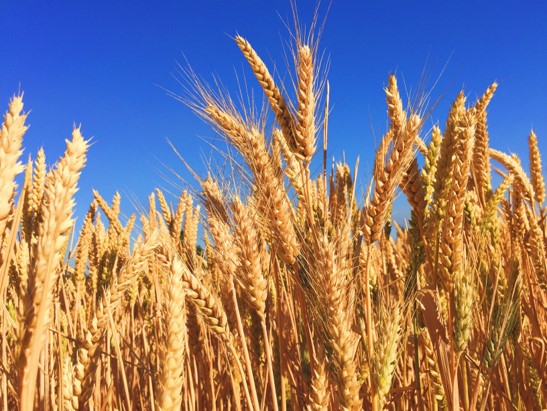
Understanding Gluten Intolerance
Gluten exists in the grass-like grains wheat, barley, rye, kamut and spelt. It provides an elasticity and glue-like capacity to hold its flour products together and provide them with a chewy texture. Gluten is not a protein itself but rather a protein composite, which means it is composed of several different proteins. The primary proteins giving gluten its utility in baking and its difficulty in health are glutenin and gliadin (in wheat), secalin (in rye) and hordein (in barley). These are elastic proteins in the protein family known as prolamins. This unique protein composite is insoluble in water and comes from the endosperm (see the accompanying illustration) within the seeds of grass-related grains.
What Is Gluten Intolerance?
Gluten intolerance is not a food allergy. It’s a physical condition in our gut. Basically, the undigested gluten proteins hang out in intestines and are treated by the body like a foreign invader, irritating the gut and flattening the microvilli along the small intestine wall. Without those microvilli, we have considerably less surface area with which to absorb the nutrients from food. This leads sufferers to experience symptoms of malabsorption, including chronic fatigue, neurological disorders, nutrient deficiencies, anemia, nausea, skin rashes, depression, and more. If we remove the gluten from the diet gut feels good and recovers.
Depending on the tolerance level gluten allergy can be a simple gluten sensitivity or a full-blown celiac disease. Just a decade ago, gluten-intolerance levels were at 1 in 2500 worldwide. Today, it’s at 1 in 133. That means gluten diet is not fad.
Symptoms of gluten allergy:
- Abdominal Distention
- Abdominal Pain and Cramping
- Alternating Bouts of Diarrhea and Constipation
- Bloating
- Bone Density Loss
- stomach rumbling
- Brittle Nails
- Constipation
- Depression, Anxiety and Irritability
- Dry Hair
- Diabetes
- Diarrhea
- Edema, small rash -bumps in skin
- Fatigue, Anemia
- Hair Loss (Alopecia)
- Headaches and Migraines
- Infertility
- Joint pain
- Nausea
- Numbness or tingling in the patient’s hands and feet
- Osteoporosis
- Fibromyalgia
There are different forms of gluten intolerances – Celiac Disease, Non-Celiac Gluten Sensitivity (NCGS)
Wheat Allergy, Dermatitis Herpetiformis and Gluten Ataxia. Amongst these most well known condition is celiac disease.
Celiac disease: Gluten causes this condition. It is important to find out when any of the above mentioned symptoms noticed in case in a person it is better to consult a doctor. When you have this disease and you eat food with gluten in it, the gluten triggers an immune response that is not normal. This damages the inside of your small intestine camera.gif so that it can’t do a good job of absorbing nutrients from your food. It’s important to get treatment, because celiac disease can: Lead to anemia, Lead to osteoporosis, Raise your risk of lymphoma. In children, celiac disease can slow growth and weaken bones. If it isn’t treated, your child can get very sick. When celiac disease prevails some people vomit after they eat gluten. This is more likely to happen in children than in adults.
Gluten free diet: Before going gluten-free diet on your own contact your physician or family doctor. Go through clinical diagnosis and seed dietarians suggestions. People on a gluten-free diet need a sharp eye for labels. Some ingredient red flags are obvious, like wheat, wheat gluten, barley, or rye. just check the label to make sure it says “100% gluten-free.”
For more information on Gluten intolerance please visit below sites.
Image courtesy:Photo by Melissa Askew on Unsplash
Author: Sumana Rao | Posted on: November 30, 2015
« AMRIT : GOOD NEWS! Affordable drugs for cancer and heart diseases by Govt of India Holy Tulsi Plant and its Medical Power »






















Write a comment